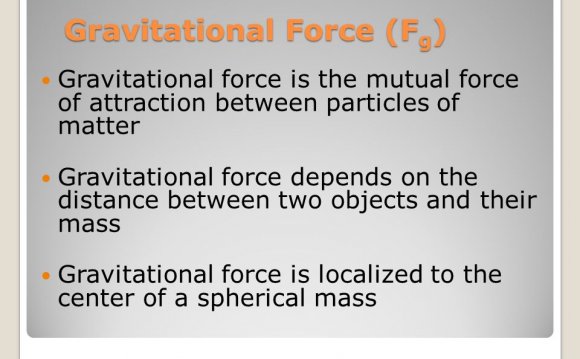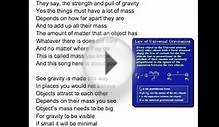
Commonly referred to as gravity, it is important to encourage the use of the correct term, gravitational force. In the SPACE research report Forces (Russell, et al 1998) clear stages in the progression of childrens understanding of gravitational force and associated phenomena are identified. This provides a useful framework upon which to consider and develop your own ideas.
Gravitational force keeps things on the ground and stops them floating away
At the simplest level this statement describes the most obvious phenomenon associated with gravitational force. Film of astronauts in weightless or low gravity situations clearly show what happens when gravitational force is not pulling with the strength that we are familiar
Gravitational force is a property of the Earth and thus a pull from beneath
The pull of gravitational force is directed towards the centre of the Earth
In both cases, the word pull is important as it starts to lead children away from the common misconception of gravity acting as an adhesive.
The second statement clearly builds on the first and is exemplified by the childrens drawing of the Earth in cross section with arrows indicating the direction that gravitational force is acting which adorns the recent National Curriculum Attainment Targets (p22). Our societys perception of geographical North being above geographical South contributes to both childrens and adults inability to shake off the intuitive notion that people in Australia should fall off!
The size of gravitational force depends on the mass of the object being pulled by the Earth
The size of this force is the weight of the object
These linked statements are the root of much of the difficulty that people associate with an understanding of gravitational force. Children and adults when confronted with this statement find it hard to understand how the Earths gravitational force knows that it must pull a bigger mass with greater force than a smaller mass.
To help clarify this, adopt a simple, particulate model of matter that visualises all objects being made up of different numbers of unit masses (i.e. each unit mass is exactly the same). It is logical that gravitational force will pull on each unit mass with the same degree of force. It follows that an object made of two unit masses will be pulled twice as hard as an object made of only one unit mass.
The same model helps overcome the difficulty of understanding why, if this is the case, do objects of different mass accelerate towards the Earth at the same rate (assuming that air resistance effects are ignored). This is counter-intuitive to the commonly held mis-conception that heavy objects fall faster than light ones (even when experiments dropping objects such as screwed up balls of paper and steel kilogram masses prove otherwise). Gravitational force pulls on each unit mass with a constant force resulting in a constant acceleration (an increase in speed of about 10 metres per second every second). Whether it is pulling one unit mass or a thousand unit masses, this constancy of acceleration remains the same.
[These two ideas of larger gravitational pulls on larger massed objects and the constancy of acceleration due to the pull of gravitational force regardless of the mass become confused, of course, because of the impact of air resistance on falling objects. This will be discussed in the section on friction and air resistance.]
The notion of unit mass as being a constant value whether gravity is acting or not also helps us to distinguish between mass and weight. An objects mass is determined by the number of unit masses that make it up. Its weight is determined by the degree to which gravitational force acts on it. On Earth an object whose mass is 100 grams is pulled towards the centre of the planet with a force of 1 Newton. This is said to be the weight of the object (i.e. the downward force it exerts because gravitational force is acting on it). In space where there is negligible gravity, the force on the object is virtually nil so the object, while still retaining its mass of 100 grams is now weightless.
Gravitational force on the Moon is less than on Earth
The Moon is a smaller object than the Earth and of lower mass. As a consequence, its gravitational field only pulls with a force of about a fifth of that of the Earth. An object of mass 100 grams which weighs 1 Newton on Earth would only weigh 0.2 Newtons on the Moon (NB: the mass remains unchanged at 100 grams).
The size of the gravitational force is determined by the mass of the object and the mass of the Earth or Moon
There is gravitational force between any two objects
Children and adults will come to accept that the invisible gravitational forces that they experience are associated with the unimaginably large masses of planets and other heavenly bodies. The idea that small massed objects such as themselves also exert gravitational force is often a step too far in terms of credulity! However accepting that this last statement is true, then the gravitational force between two objects is the sum of both.
The size of this gravitational force is not only dependent on their masses but also the distance between these objects
INTERESTING VIDEO










